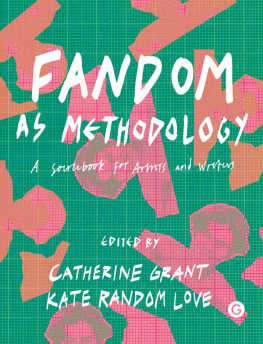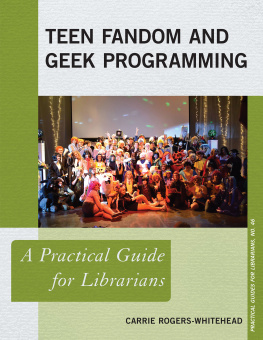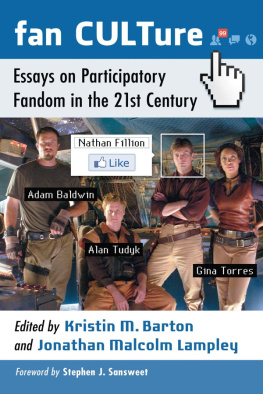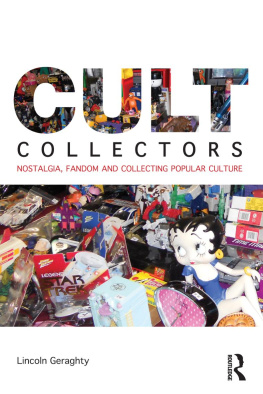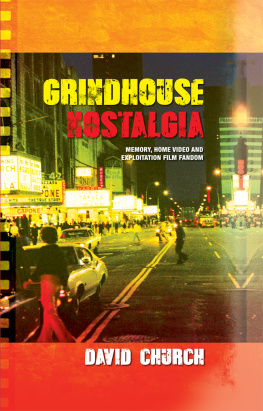UNIVERSITY OF IOWA PRESS, IOWA CITY 52242
Copyright 2021 by the University of Iowa Press
uipress.uiowa.edu
Printed in the United States of America
Design by Teresa Wingfield
No part of this book may be reproduced or used in any form or by any means without permission in writing from the publisher. All reasonable steps have been taken to contact copyright holders of material used in this book. The publisher would be pleased to make suitable arrangements with any whom it has not been possible to reach.
Printed on acid-free paper
LIBRARY OF CONGRESS CATALOGING-IN-PUBLICATION DATA
Names: Waysdorf, Abby S., 1985 author.
Title: Fan Sites: Film Tourism and Contemporary Fandom / Abby S. Waysdorf.
Description: Iowa City: University of Iowa Press, [2021] | Series: Fandom and Culture | Includes bibliographical references and index. |
Identifiers: LCCN 2021003493 (print) | LCCN 2021003494 (ebook) | ISBN 9781609387921 (paperback) | ISBN 9781609387938 (ebook)
Subjects: LCSH: Tourism and motion pictures. | Motion picture audiences. | Fans (Persons)
Classification: LCC G155.A1 W39 2021 (print) | LCC G155.A1 (ebook) | DDC 338.4/791dc23
LC record available at https://lccn.loc.gov/2021003493
LC ebook record available at https://lccn.loc.gov/2021003494
Acknowledgments
Books are always a process, and this one is no exception. It has been borne out of a long period of many late nights, frustration, confusion, and, ultimately, enlightenment (hopefully). I couldnt have done it without the support of many, many people, whom I will try to address here.
First, I would like to thank Stijn Reijnders, under whose supervision this book began as a PhD dissertation. I wouldnt have been able to do this research without him taking a chance on me, and I value his continuing support greatly. Without his feedback, this would have been a much lesser book. Thank you so much, Stijn. I would also like to thank Eggo Mller for his belief in my academic talents from when I first showed up in his classroom ten years ago to now, and whom I am privileged to have guiding me in my current work in Utrecht.
I am also grateful to my former research team at Erasmus University Rotterdam: Nicky van Es, who still needs to take me to a Feyenoord game; Balasz Boross, who always inspires me with his theoretical insight and wit (and thanks to Henrik for putting up with us constantly talking shop over dinner, as well as for your own friendship); and Leonieke Bolderman, without whom Id never get anything done, whos been a rock, a shoulder to cry on, and a true inspiration as we fight through academia.
I have been very lucky in my career to be part of the fan studies community, who have encouraged and inspired me throughout my travels (both actual and figurative) with this work. Thank you to Rebecca Williams, Ross Garner, Mark Stewart, Kylie Stewart, Bertha Chin, Mark Duffett, Matt Hills, Simone Driessen, Abigail de Kosnik, Lori Morimoto, Paul Booth, and everyone else Ive so appreciated spending time with at the Fan Studies Network conferences. Youve continually reminded me why I love this work and why its worth doing. I would also like to thank the editorial team at University of Iowa Press for their support throughout the process of making this book a reality.
I wouldnt have been able to do anything, though, without my friends who made the Netherlands a home for me when I came here ten years ago, and without whom being here right now would be so much more difficult. Thank you, Roel, Cate, Alwin, Pepijn, Tom, Ben, Noah, Morgan, Jonas, Derek, Courtney, Alexa, Linda, Marigje, Martijn, Felix, and everyone else for every dinner, late night, movie screening, flower market visit, and everything else that has made me feel welcome and loved. A special acknowledgment to my paranymph, Sam, who has always been there for me, never letting me get too low, and reminding me about whats important (and that travel is for fun). I love you all.
Finally, I want to thank my family. I may be far away, but I think of you all the time, and without you there is no way I would be where I am today. Thanks to my sister, Nina, whom Ive been privileged to watch grow into something incredible. Thanks to my brother, Matt, whos become someone I constantly brag about, and his wife, Meaghan, whom I love having in the family, and to my nephew, Daniel, whom I havent met yet but love already. And, finally, but most importantly, to my parents, whose love, support, and guidance encouraged me to follow my dreams, even though it took me far away from them. They have always been my biggest fans. I hope Ive made you proud.
An earlier version of has been previously published as Immersion, Authenticity, and the Theme Park as Social Space: Experiencing the Wizarding World of Harry Potter in International Journal of Cultural Studies 21, no. 2 (2018): 173188 (all with Stijn Reijnders). My thanks to these journals, their editors, and the reviewers for their valuable feedback, which greatly improved these texts, and for permission to reuse them here. Parts of the introduction were also previously published as Placing Fandom: Reflections on Film Tourism in Locating Imagination in Popular Culture: Place, Tourism, and Belonging, edited by Nicky van Es, Stijn Reijnders, Leonieke Bolderman, and Abby Waysdorf (Oxon: Routledge, 2021), 283296.
FAN SITES
Introduction
Why Are We Here?
When explaining my research, I tend to get one of two responses. The first is excitementpeople have stories about film tourism trips theyve been on, or ones they want to go on, which they relay to me with enthusiasm or a little bit of envy. The second is confusionwhy would anyone want to go see some field where they filmed a TV show? Isnt that a bit weird? Wouldnt it ruin the magic?
While exact numbers are hard to come by, the first group is not alone. Film tourism is seen as an important, and growing, niche in the tourist industry, with films and television shows serving to provide valuable advertising for destinations in an increasingly competitive tourist market. Having a popular film or television show showcasing an areas landmarks and landscapes is seen as not only a way to stand out from the crowd, but a way to draw tourists in directly to see where a favorite took place. Stories about places that show increases in tourist numbers after their appearance on screen pop up regularly, from the remote Irish island of Skellig Michael, which appears in a recent Star Wars film, Film tourism is a successful business and only looks to become more so.
Despite the confusion of the second group, in some ways the reasons for this practice are clear. From viewing great works of art and architecture to experiencing the customs and foods of faraway lands, the rhetoric of tourism tells us that there is no substitute for really being there. It has long served to make the exotic and fantastic real, bringing what was previously becoming part of the official heritage discourse of many places. Tourism connected to film is therefore carrying on the long traditions of organized tourism, updated for an age in which film and television viewing are our favorite leisure activities.


